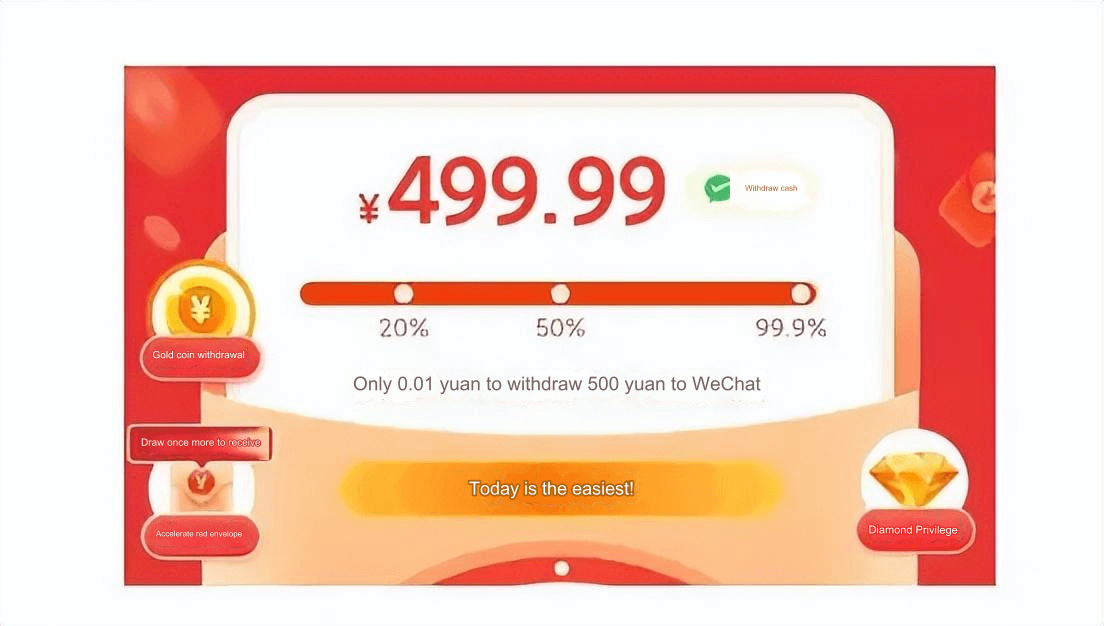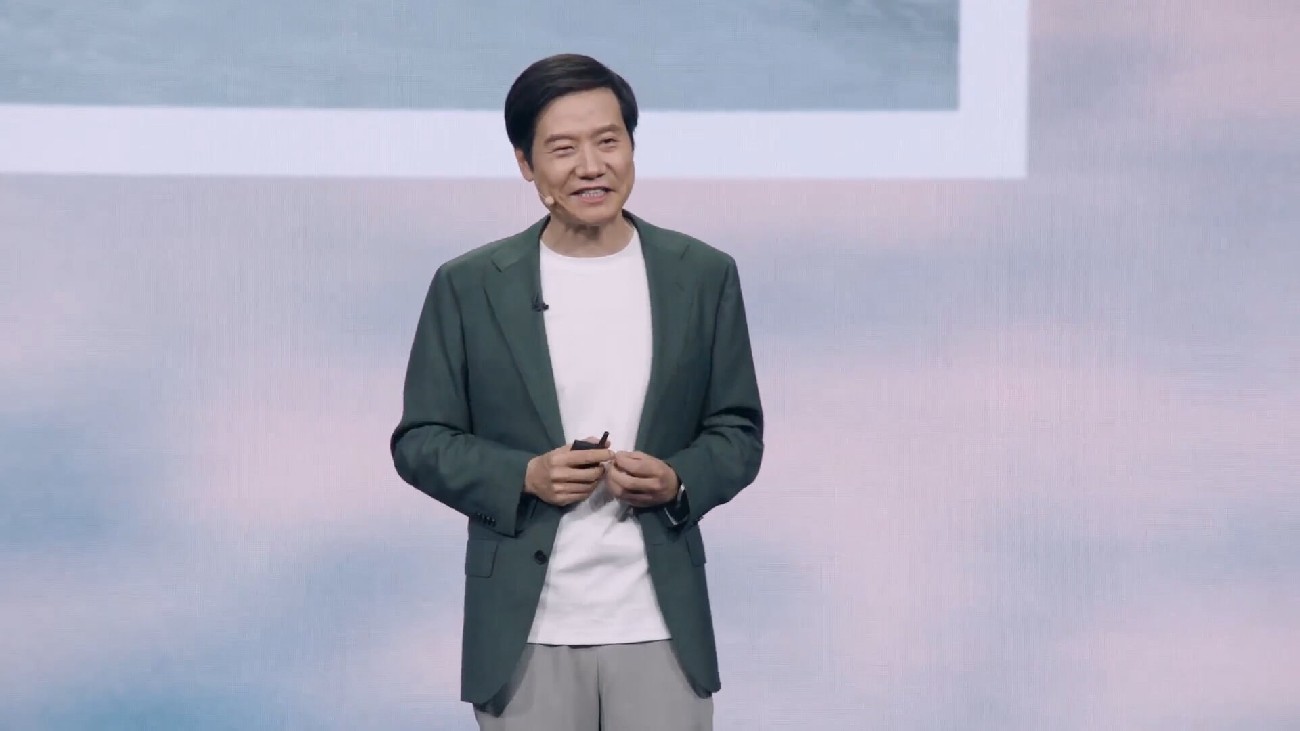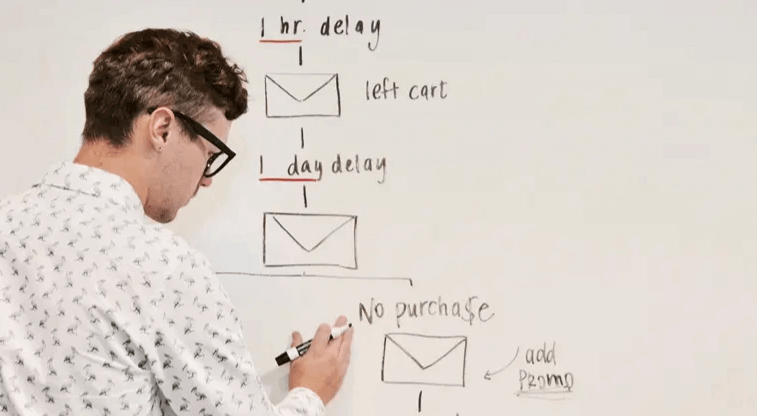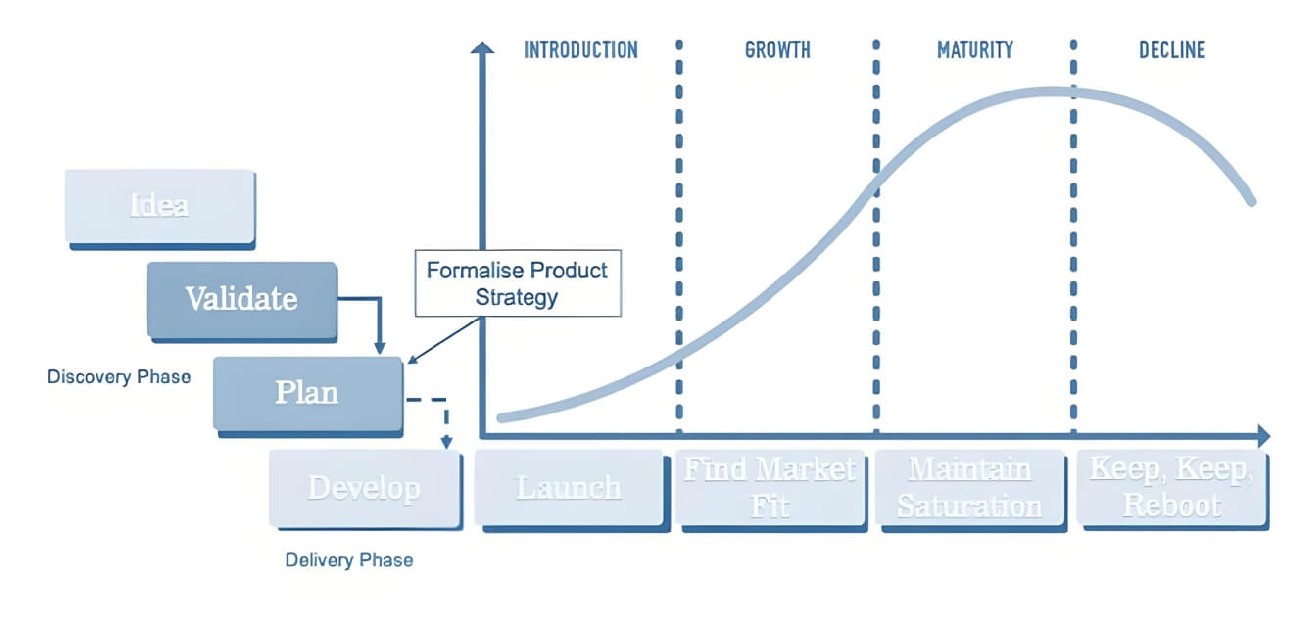Discover the essential strategies for mastering seasonal App Store Optimization (ASO). Learn how to leverage holidays, events, and user behavior patterns to boost app downloads and maximize growth. Explore tips on seasonal keyword research, themed app elements, and global cultural insights for your app's success.
When working on ASO (App Store Optimization), it’s crucial for marketers to stay informed about seasonal changes and holidays, as effectively utilizing seasonality can significantly drive more app downloads and growth. So, how do we understand and apply seasonal ASO? In this article, the author offers a summary of the key strategies. Let's dive in!
If you have been involved in ASO for some time, you will know the importance of seasonality. Your app or game might experience traffic spikes at different times of the year due to holidays, festivals, seasons, and events.
Creating strategies in advance for predictable holidays or seasonal changes can lead to more app downloads and growth. Understanding which times your app gets more (or less) attention and using seasonality to your advantage is crucial for long-term ASO planning. In this article, we’ll cover strategies for optimizing seasonal ASO.
1. What is Seasonal ASO?
Seasonal ASO refers to long-term or short-term periods where we observe changes in user behavior in the App Store or Play Store. Some app categories may see an increase in downloads during certain periods, while others may see a decline. For example, during Black Friday and Christmas, many shopping apps experience a spike in downloads, while during the World Cup, entertainment apps in Qatar saw a 116% increase in downloads.
Every app is affected by seasonality, depending on the type and category of the app. Common seasonal factors include:
-
Holidays like Christmas, Thanksgiving, New Year, Eid, etc.
-
Major events like the World Cup or Super Bowl
-
Changes in weather or seasons
-
Time periods specific to other categories, like back-to-school, wedding season, summer vacations, Pride Month, Black Friday, Cyber Monday, etc.
2. How to Match Seasonality with Your App Type?
There are many holidays and events throughout the year. ASO professionals should not blindly jump into seasonal marketing just because of popular trends but should consider how seasonality matches their app's specific needs.
Here are two main ways to determine the compatibility between seasonality and your app:
1. Pay Attention to Cultural Differences Across Regions
Different countries and regions celebrate different holidays, so it's essential to understand which holidays or events are significant to your target audience. Although some of these points might seem like common sense, many marketers still make basic mistakes—especially when entering new markets. Here are some key points to keep in mind:
-
Not all seasons are the same globally. For example, summer in the Northern Hemisphere is winter in the Southern Hemisphere. Adding winter imagery like snowflakes in your U.S. app screenshots might not work in Brazil. It could even decrease conversion rates, as the content may not resonate with users there.
-
While many countries share the same holidays, the dates often vary. For example, Russia celebrates Christmas on a different date than Western countries. There are 38 countries that celebrate Mother's Day on different dates.
-
The same holiday can be celebrated differently in various regions. For example, Halloween in the UK might involve pumpkin carving and costumes, while in Spain and Mexico, it’s more about commemorating the deceased, similar to the Qingming Festival in China.
-
Weather and traditions also differ worldwide. For example, both the U.S. and Australia celebrate Christmas on December 25, but the imagery and traditions are quite different—Australians might celebrate with barbecues on the beach, while Americans build snowmen.
Seasonality can also be categorized by life events, such as wedding season or back-to-school, which occur at different times in various parts of the world.
2. Analyze Data
Knowing when seasonality is maximized and understanding cultural differences is only half the battle. You also need to ensure your decisions are based on solid data. We recommend reviewing the following data points before launching any seasonal campaigns:
-
Category Trends: Analyze trends over the past few years to see when specific categories experienced download growth or decline. These trends might differ between Android and iOS. For example, users might care more about discounts around Black Friday and Christmas, leading to a rise in shopping app downloads. Similarly, fitness or education app downloads might increase as users set New Year's resolutions.
-
Historical Data of Your App: Look at the download trends of your app over the past 1-3 years to identify any periods where downloads significantly increased. Be mindful that past growth could be influenced by paid advertising or other marketing efforts.
-
Competitor Trends and ASO Updates: Use third-party market intelligence tools like Data.ai or SensorTower to examine competitor download trends and ASO updates for specific periods. Competitor growth might also stem from paid campaigns or other marketing activities.
-
Keywords: Check which keywords see an increase in searches during holidays. For example, during Christmas, terms like "shop," "xmas," "christmas," "gifts," etc., see a spike in search volume.
3. How to Leverage Seasonality for ASO Optimization?
Now that we understand the basics of seasonal ASO, let’s dive into how to actually apply seasonality for ASO optimization.
1. App Icon
In the example below, CyberGhost VPN tested different app icons for Halloween. The test started one week before the event, and the results show that the Halloween-themed icon significantly improved conversion rates compared to the original.
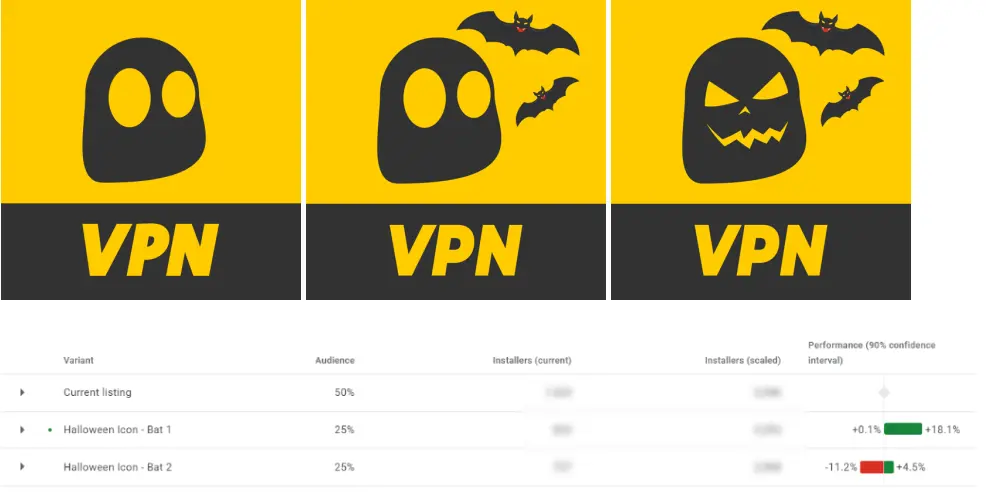
2. App Screenshots and Videos
ASO experts often add holiday-themed elements to app screenshots and videos. Here are a few examples:
Temu's Black Friday Promotions
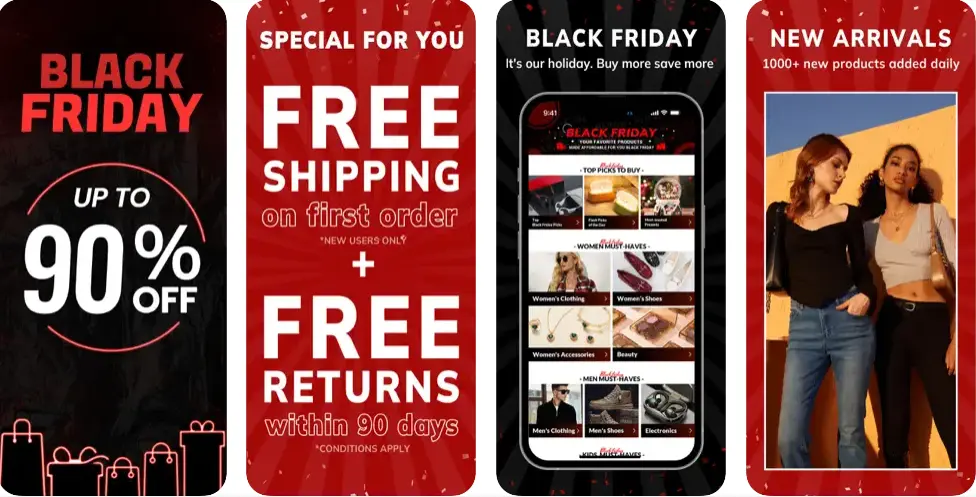
PicCollage's Christmas-themed Videos and Screenshots
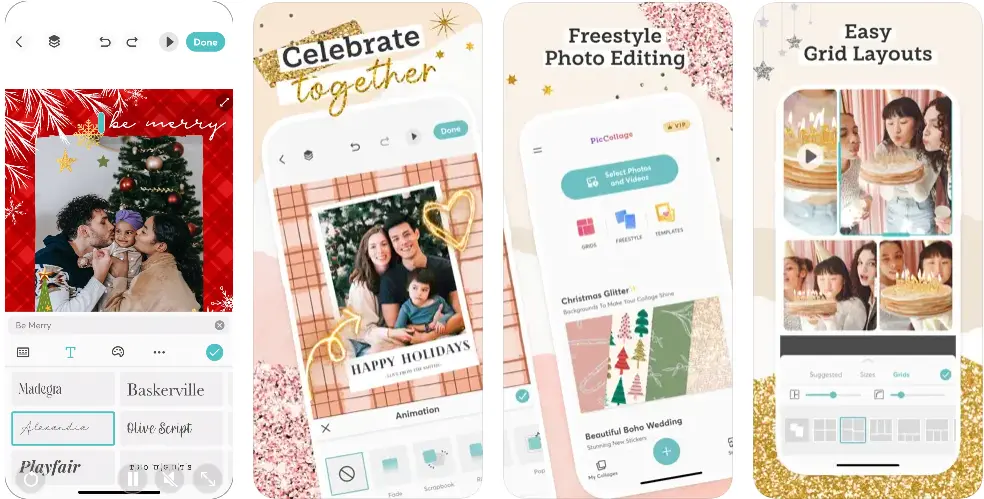
Postabloom's Festive Screenshots
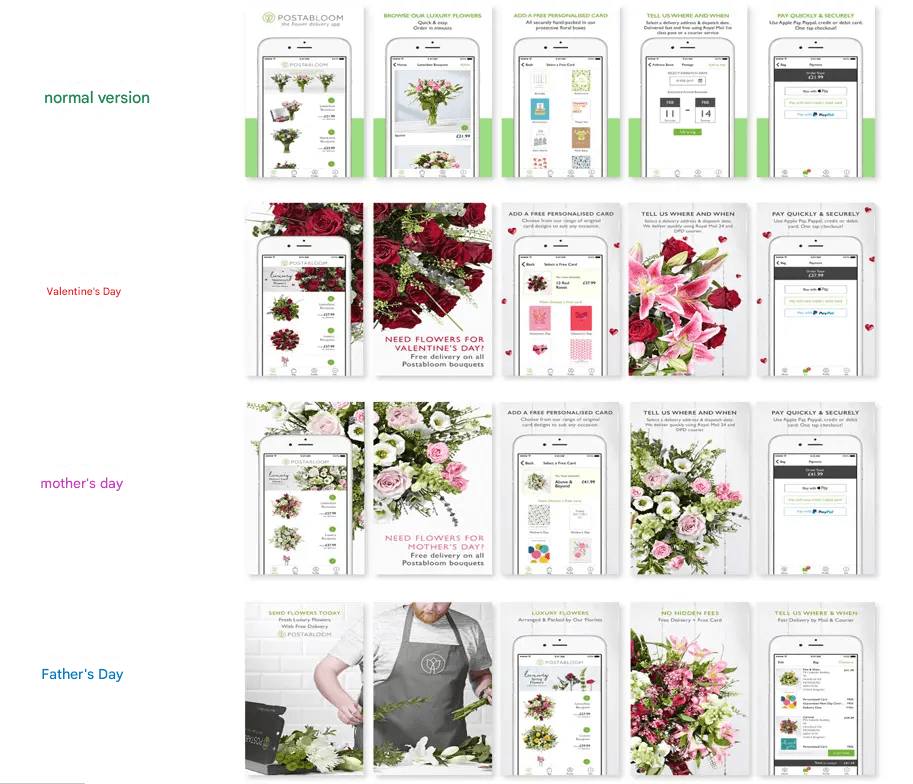
Postabloom, a flower delivery service from the UK, prepared impressive app screenshots for Valentine’s Day, Mother’s Day, and Father’s Day. Although it has since been taken down, its seasonal screenshots still serve as a good example.
3. Featured Graphics (Play Store Only)
When publishing an app on the Play Store, you must provide a featured graphic. These graphics convey the app or game experience and attract new users. Even though visibility for featured graphics on the Google Play Store has significantly decreased, they still offer exposure opportunities. ASO experts should not overlook them.
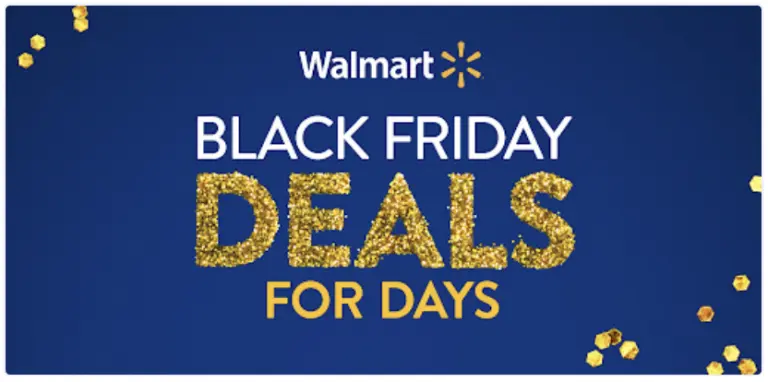
Here’s an example of Walmart’s featured graphic during Black Friday.
4. Short Description (Play Store) / Promotional Text (App Store)
The short description in Google Play Store or the promotional text in the App Store is visible directly on the product page. You can use these spaces to highlight your seasonal marketing message.
Here’s an example of Lazada’s promotional text for the Double 12 event in the App Store.
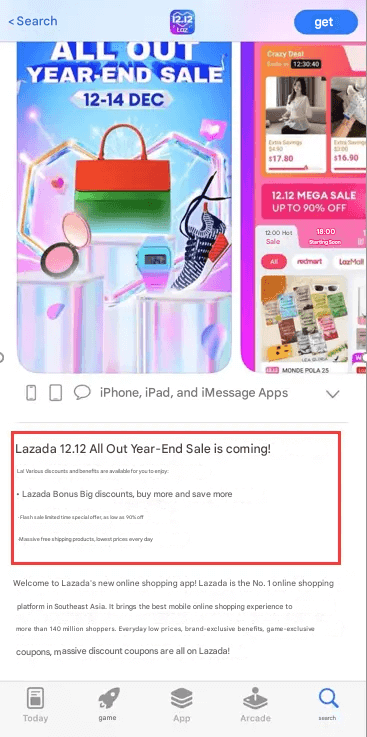
5. In-App Events (App Store) / LiveOps (Play Store)
In-app events on the App Store or LiveOps (now called "Promotional Content" on Google Play) are great ways to increase your app's engagement and visibility during the holiday season.
On the App Store, in-app events are shown both on the product detail page and in search results. Including holiday keywords like “Black Friday Sale” or “Christmas Special” in event titles will increase your chances of ranking for those terms.
In Play Store, promotional content can appear on the app or game tab, the activities tab under the game tab, search results, and product detail pages, offering ample exposure. However, not all developers can access this feature yet.
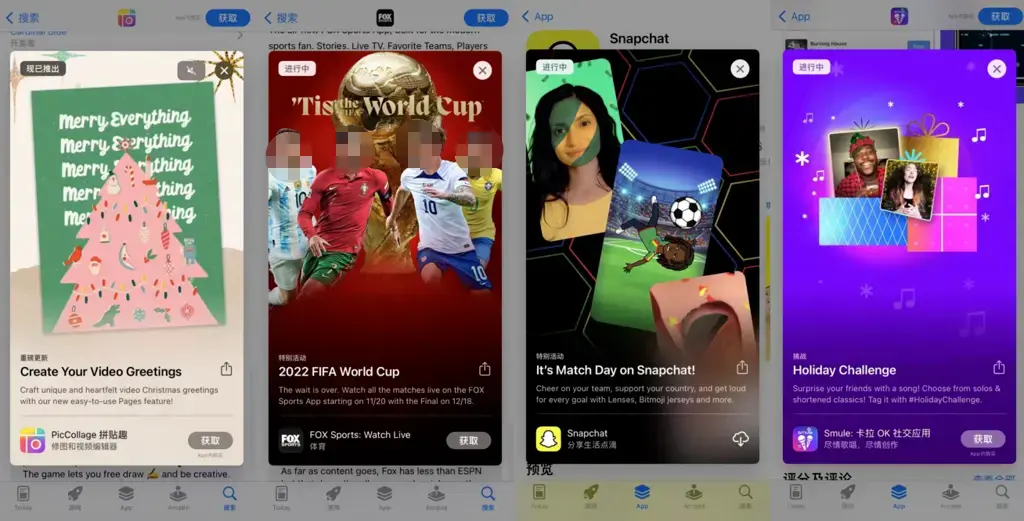
6. In-App Purchases
Another way to attract user attention is by offering special in-app purchases related to seasonal events. For example, you can offer Christmas-themed character skins for action games or festive-themed assets for photo and video editing apps.
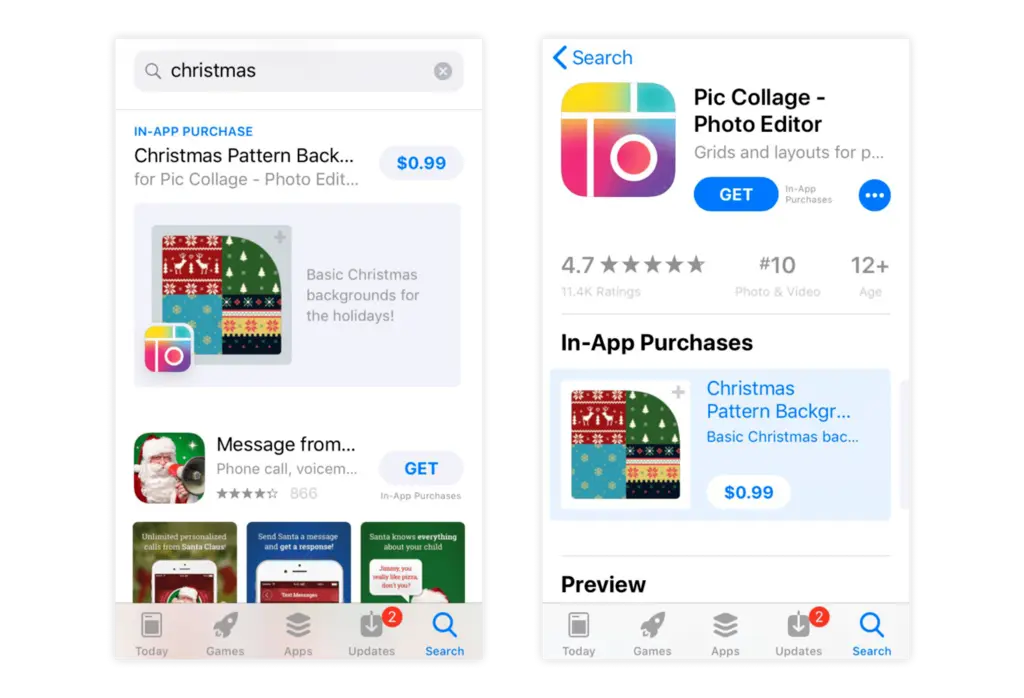
These in-app purchases not only capture attention but can also help improve your app’s ranking, as related items may appear in search results for relevant keywords.
7. Update Notes
Introducing seasonal content in the app update notes is also a good idea. For example, Fox Sports emphasized the World Cup in their update notes, while Lazada highlighted the upcoming Double 12 event.
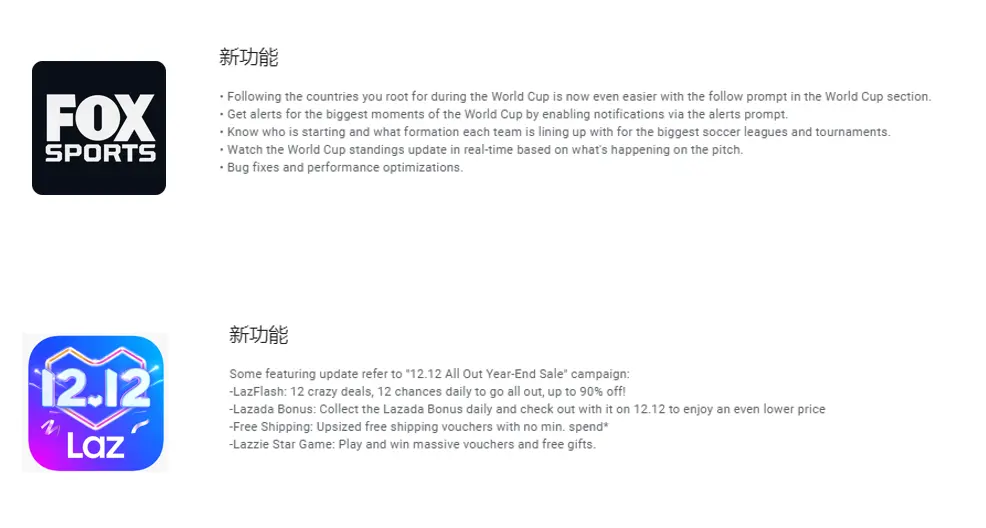
8. Special Keyword Opportunities
As mentioned earlier, some keywords experience spikes in search volume due to associated seasonal events. By leveraging such keywords, you can attract more traffic to your app.
It’s wise to research the search volume trends for keywords relevant to your app and season, then update your app metadata with these keywords, including the app name, subtitle (App Store only), keyword field (App Store only), short description (Play Store only), and long description (Play Store only).
However, as the popularity of these keywords increases, so does competition. You might consider using Apple Search Ads (ASA) to bid on these keywords, but keep in mind that the average cost-per-tap (CPT) for these keywords may increase. Be sure to track the ROI for these keywords to ensure you’re getting the most value.
4. Conclusion
These are just a few things ASO experts can do for different holidays or events. Seasonal ASO is a fantastic opportunity to drive app downloads and growth, and it’s one you shouldn’t miss!
Finally, here are five additional tips to help you make the most of seasonal ASO:
-
For time-sensitive content (like holiday-specific updates), make sure to launch and remove it on time. Sending seasonal messages after the holidays can look unprofessional.
-
Ensure your app is prepared for the increased traffic, avoiding crashes or errors to minimize user churn or negative reviews.
-
For well-known or unique apps, consider combining holiday events or updates with a submission to get featured by Apple or Google.
-
Simply adding snowflakes or other holiday elements to your screenshots might not result in a significant effect, so focus on ensuring your app offers a holiday or event-related experience.
-
Track the effectiveness of your seasonal ASO optimizations to build valuable insights for future holidays or events.
Wishing you a huge increase in downloads! 🎉
